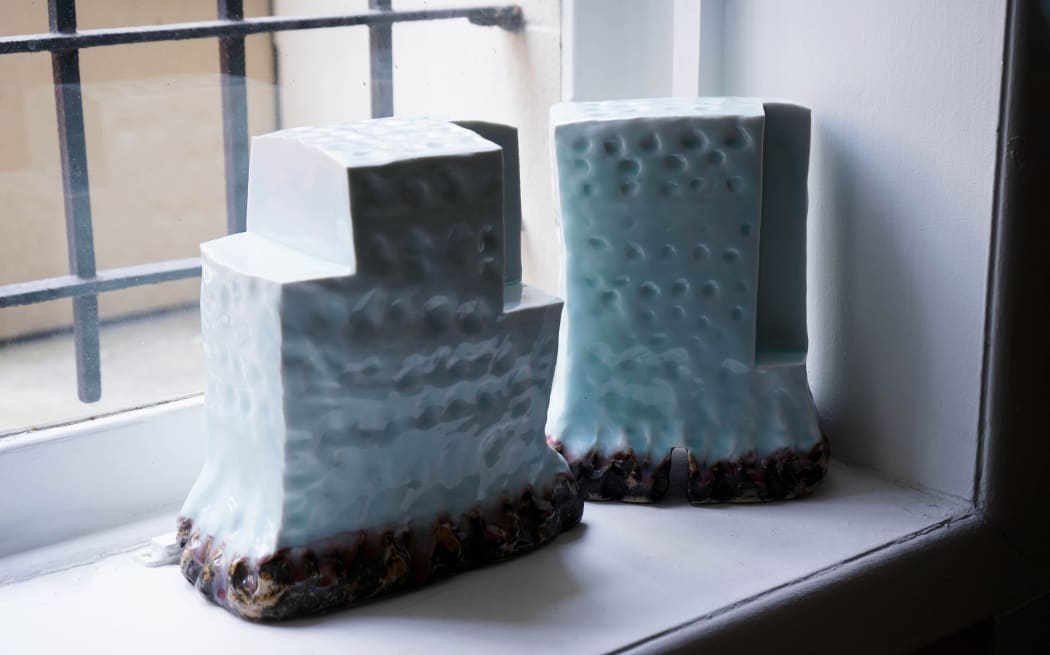
“Science and technique are necessary in ceramics. However, I believe it is prayer. Humans demand joy in their life. Literature, philosophy, music, religion, dance, performance, etc… Time and thoughts became the culture. And richness was given in life. In the infinite transparency like the water from a spring, I want to find this life.”
—Yoshikawa Masamichi (International Academy of Ceramics)
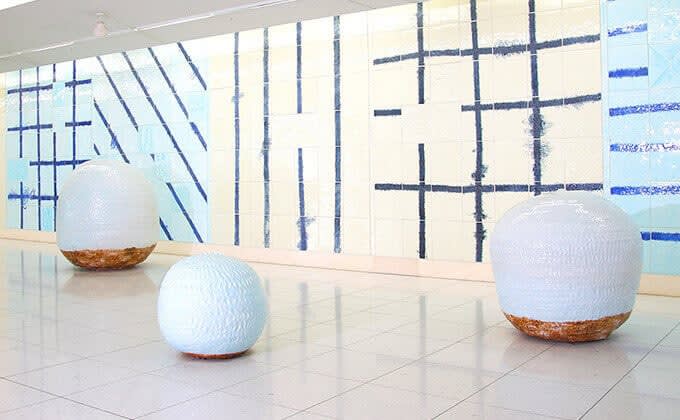 Three works by Yoshikawa Masamichi in the terminal at Nagoya International Aiport, 2005. Image courtesy of Centrair.
Three works by Yoshikawa Masamichi in the terminal at Nagoya International Aiport, 2005. Image courtesy of Centrair.
Born in Chigasaki City in Kanagawa Prefecture- also the hometown of influential figures in avant-garde Japanese sculpture such as Isamu Noguchi- Yoshikawa Masamichi is a Japanese ceramic artist and sculptor celebrated for his work in contemporary celadon glazes. He graduated from the Nippon Design Institute before relocating to Tokoname, where he worked at the Tobosugi Kiln. In the late 1960s, he apprenticed under Sugie Junpei (杉江 淳平), known for his avant-garde objet d’art works. However, Yoshikawa gravitated instead toward functional forms, focusing on sometsuke techniques to create yunomi (tea cups) and flower vessels.
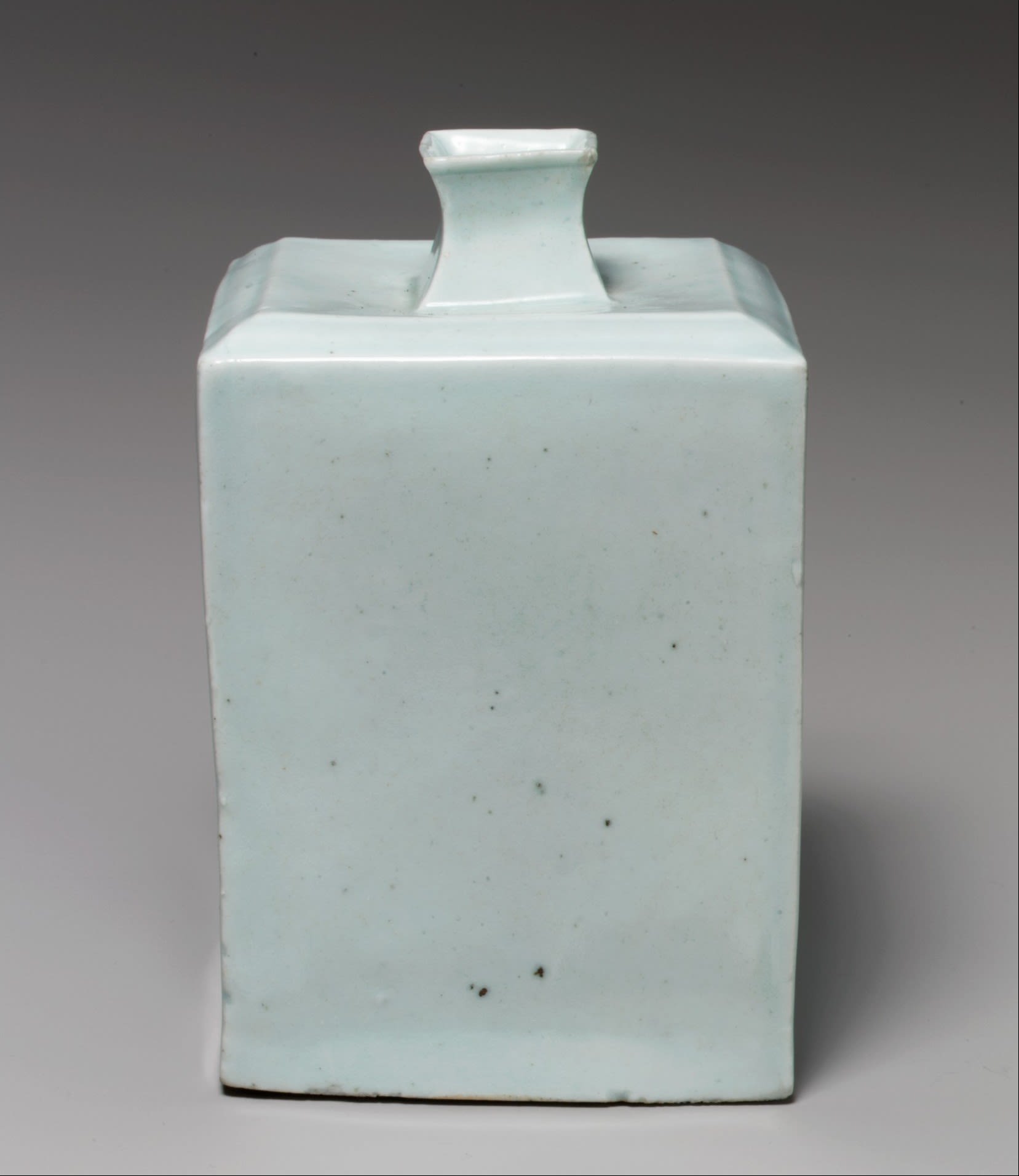 Square Bottle, Porcelain, first half of 19th century, Joseon Dynasty (1392-1910), Korea, Metropolitan Museum of Art. To view more information about the object, view the museum's website here.
Square Bottle, Porcelain, first half of 19th century, Joseon Dynasty (1392-1910), Korea, Metropolitan Museum of Art. To view more information about the object, view the museum's website here.
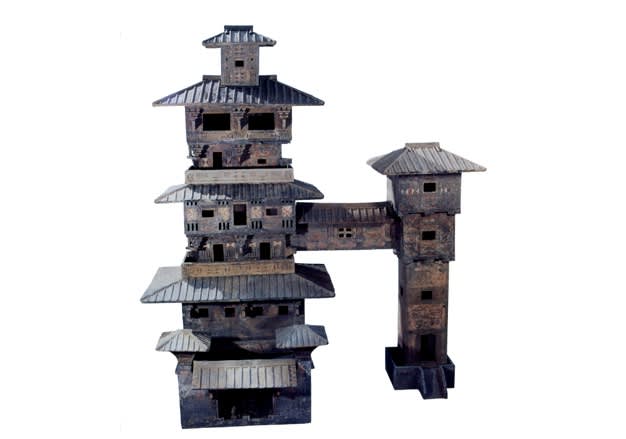
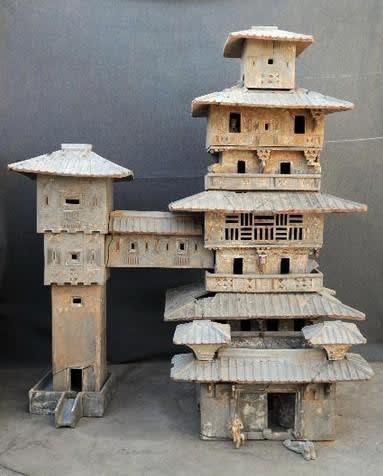
Two images of a miniature Model of a seven-story manor house and tower created in the first century Han Dynasty, China. The work was excavated from a tomb context. Images courtesy of Henan Museum of Art. To learn more about these funerary objects, view the museum's collections website here.
The turning point in Yoshikawa’s ceramic practice came by way of his encounter with East Asian archaeological materials, specifically objects excavated from tomb contexts. Seeing excavations of Chinese imperial tombs– such as Terracotta Warriors of Xi’an (210-209 BCE)– led to the inception of his celebrated “Kahyo” series. Kahyo (華俑) roughly translates to “flower tomb figurine.” The term is a broad reference to archaic Chinese burial figurines that possess an efficacious quality. Comparable figures in Japan include the haniwa of the Kofun period (3rd–6th centuries CE), terracotta forms placed on burial mounds as guardians or ritual objects. One notable formal comparison between Yoshikawa’s work and archaeological material is their shared expression with scale, size, and proportion. Both his sculptures and ancient tomb artifacts- whether miniature models of buildings or larger-than-life figurines- play with the viewer’s spatial perception. This play on proportion in his sculptures produce a compelling dialogue between the living viewer and objects conceived for another world, evoking a relational intimacy between viewer and object.
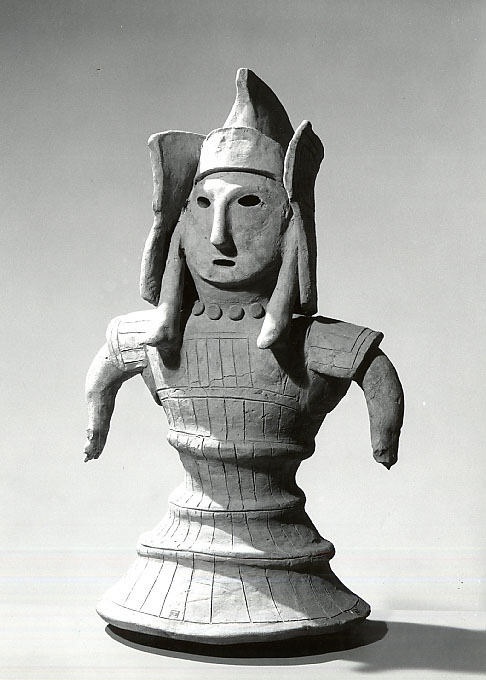
Haniwa Figure of a Warrior, 6th Century, Japan. Image courtesy of the Metropolitan Museum of Art. To learn more about this object, view the museum's website here.
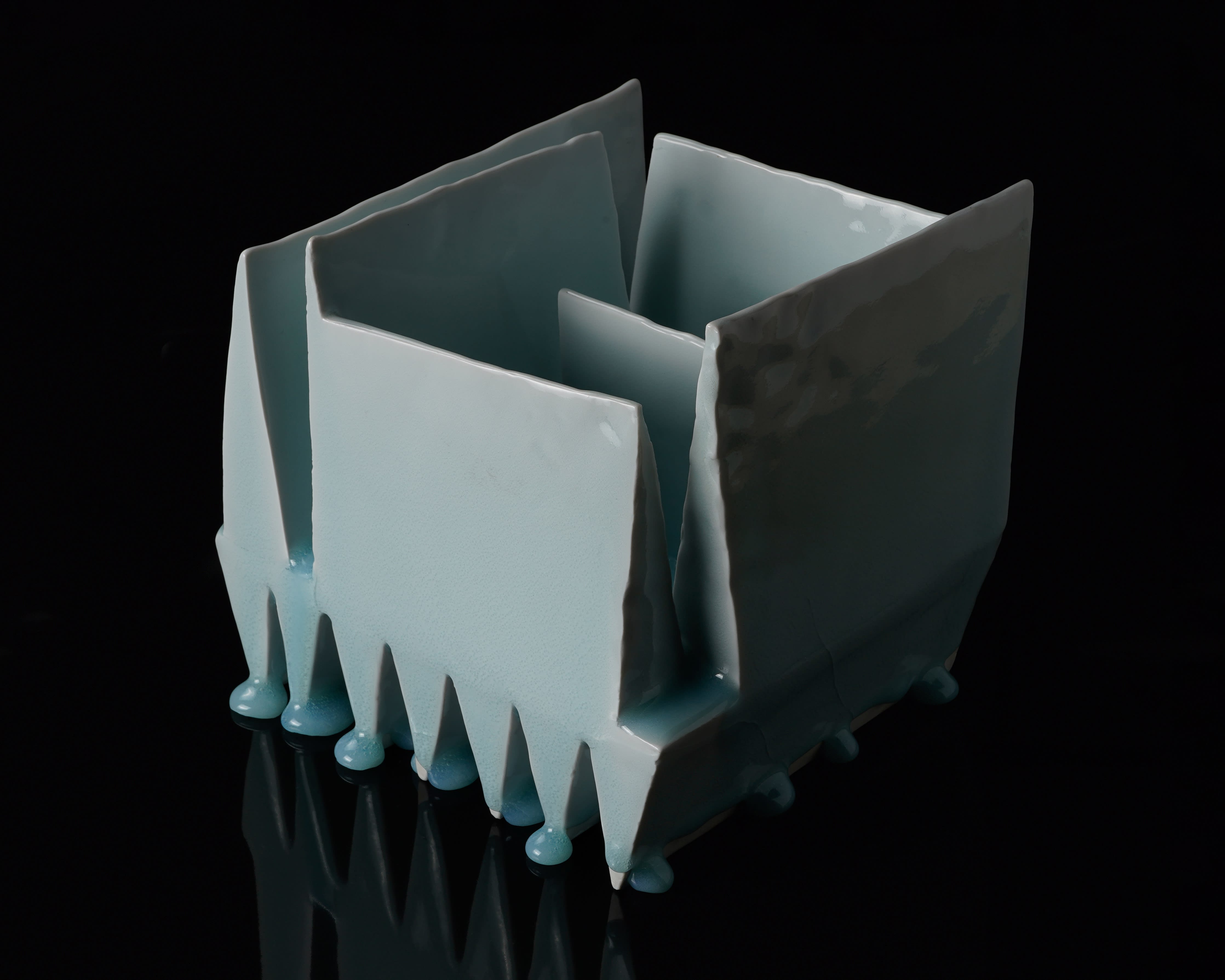 Yoshikawa Masamichi, Aerclinbecbus, private collection. Image courtesy of Dai Ichi Arts, LTD.
Yoshikawa Masamichi, Aerclinbecbus, private collection. Image courtesy of Dai Ichi Arts, LTD.
In his artist statement for the International Academy of Ceramics (IAC), Yoshikawa says that he is seeking “life within infinity,” suggesting that although these forms originate as funerary objects, they embody a persistent, spiritual continuity. The passage of time relative, in this context, becomes the mechanism through which memory and life endures. For Yoshikawa, history is not a distant abstraction but something lived, embodied, and made tangible through its material remains.
It is difficult to miss the monumentality of Yoshikawa’s work. His large-scale architectural sculptures, adorned with thick, icy-blue glaze, which he developed after witnessing Northern Song Dynasty Hakuji and Korean Joseon dynasty white porcelain. He explains: “Even though people see hakuji as too cold, there is a quality to Korean Yi-dynasty hakuji that can move me to tears, and I find seihakuji so expressive.”
Yoshikawa offers a new approach to celadon, emphasizing the need to reimagine this traditional glaze within a contemporary context. His fusion of sculptural sensibilities along with a deep love for celadon led to his international recognition as a ceramicist.
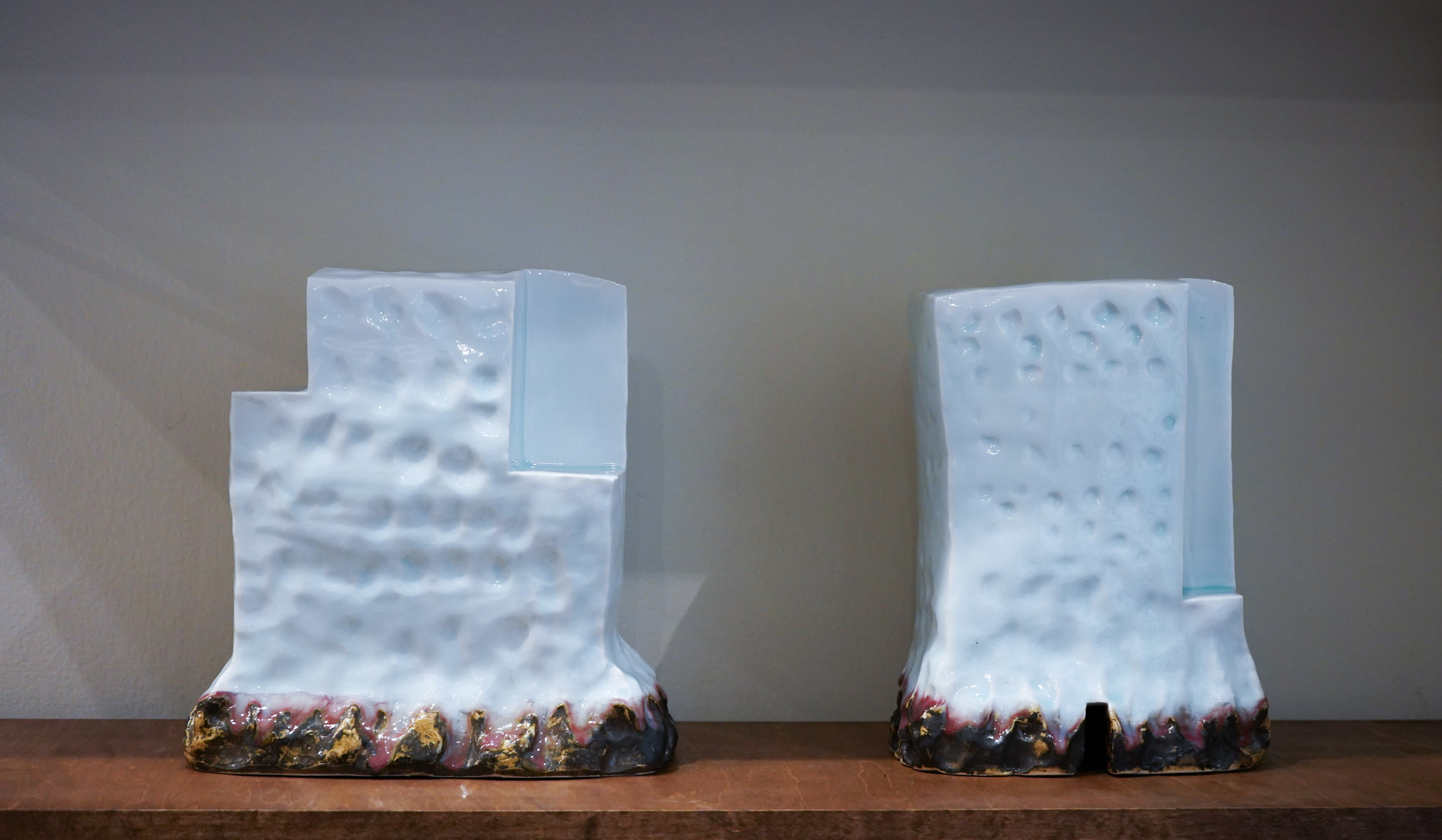
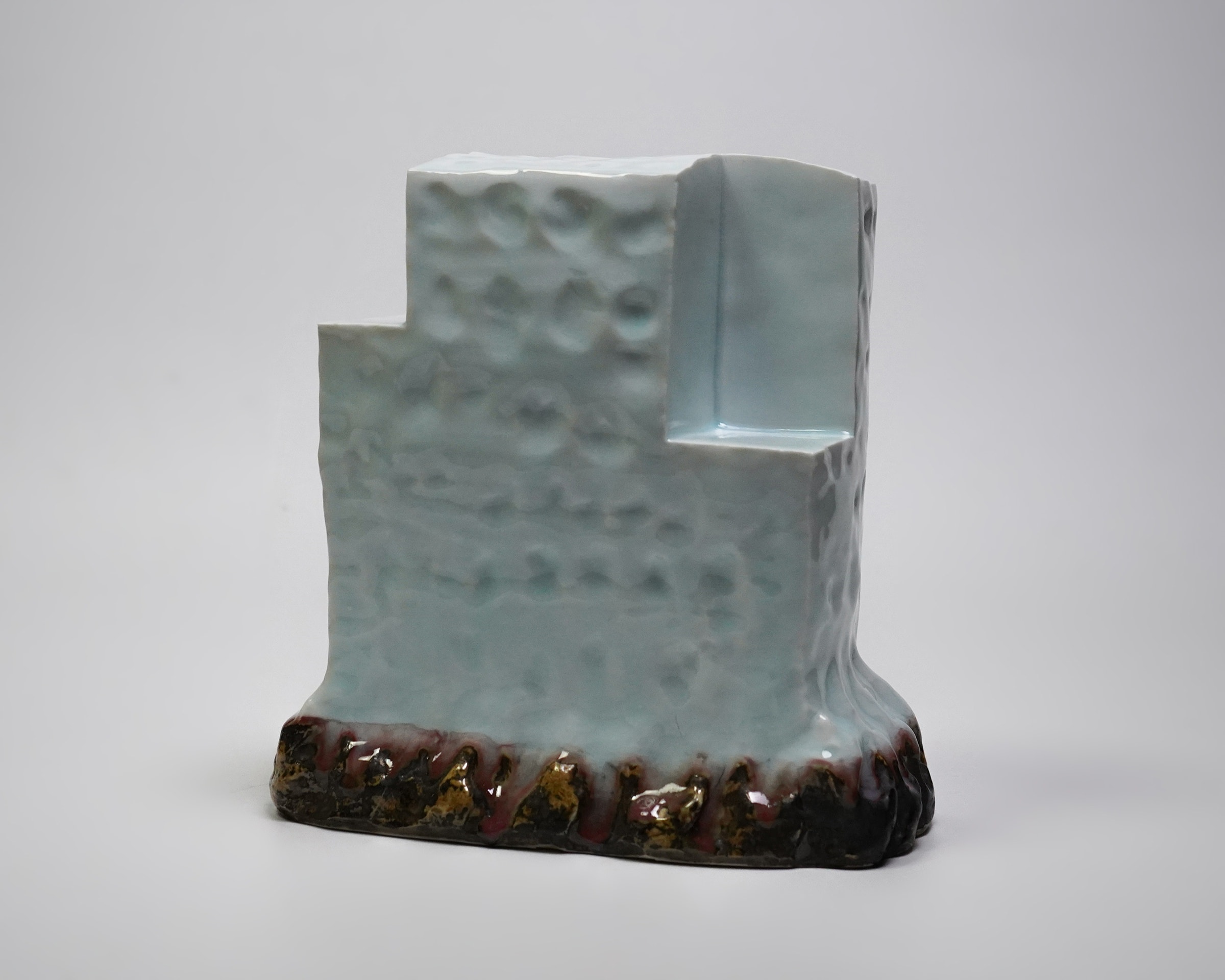 Yoshikawa Masamichi 吉川正道, Kayho No.4 華俑, 2021, With signed wood box, Porcelain with celadon glaze. Inquire about this artwork here.
Yoshikawa Masamichi 吉川正道, Kayho No.4 華俑, 2021, With signed wood box, Porcelain with celadon glaze. Inquire about this artwork here.
Yoshikawa’s process is both meticulous and time-intensive, yielding works that thoughtfully explore scale, proportion, and architectural form. Beginning with a solid block of porcelain, he carves sections and divisions using only his fingers, allowing the surface to evolve organically. The piece is then left to dry naturally for several months before undergoing firing and glazing. His signature seihakuji and seiji glazes (as exemplified in the Kahyo series) are especially thick, pooling and dripping along the contours of the work, collecting in expressive trails at the base.
The two Kahyo pieces evoke the silhouette of high-rise buildings, with their vertical, rectilinear forms interrupted by precise, clean-cut segments. Compared to other works in the series, these pieces lean more toward evoking the urban skyline than ancient archaeological sites, though the idea of small houses still resonates to the overarching theme of a tomb figurine.
After shaping the porcelain clay, Yoshikawa impresses the surfaces with finger-made depressions that resemble windows. The regularity in the rows of these marks mirrors the uniform grid of windows in modern-day Tokyo’s high-rise architecture, reinforcing the urban feel of the works. The thick glaze settles into these marks, revealing a spectrum of blue hues that shift with its depth. Near the base, the icy blue gives way to subtle magenta, deep brown, and glints of gold. These colors emerge from the celadon glaze’s chemical reaction with copper and cobalt minerals present in the glaze matrix. At the foot of each piece, a deliberate incision suggests an entryway. A viewer may perhaps interpret it as the threshold of a building, a shaded passage cutting through its core, or perhaps a doorway to another world.
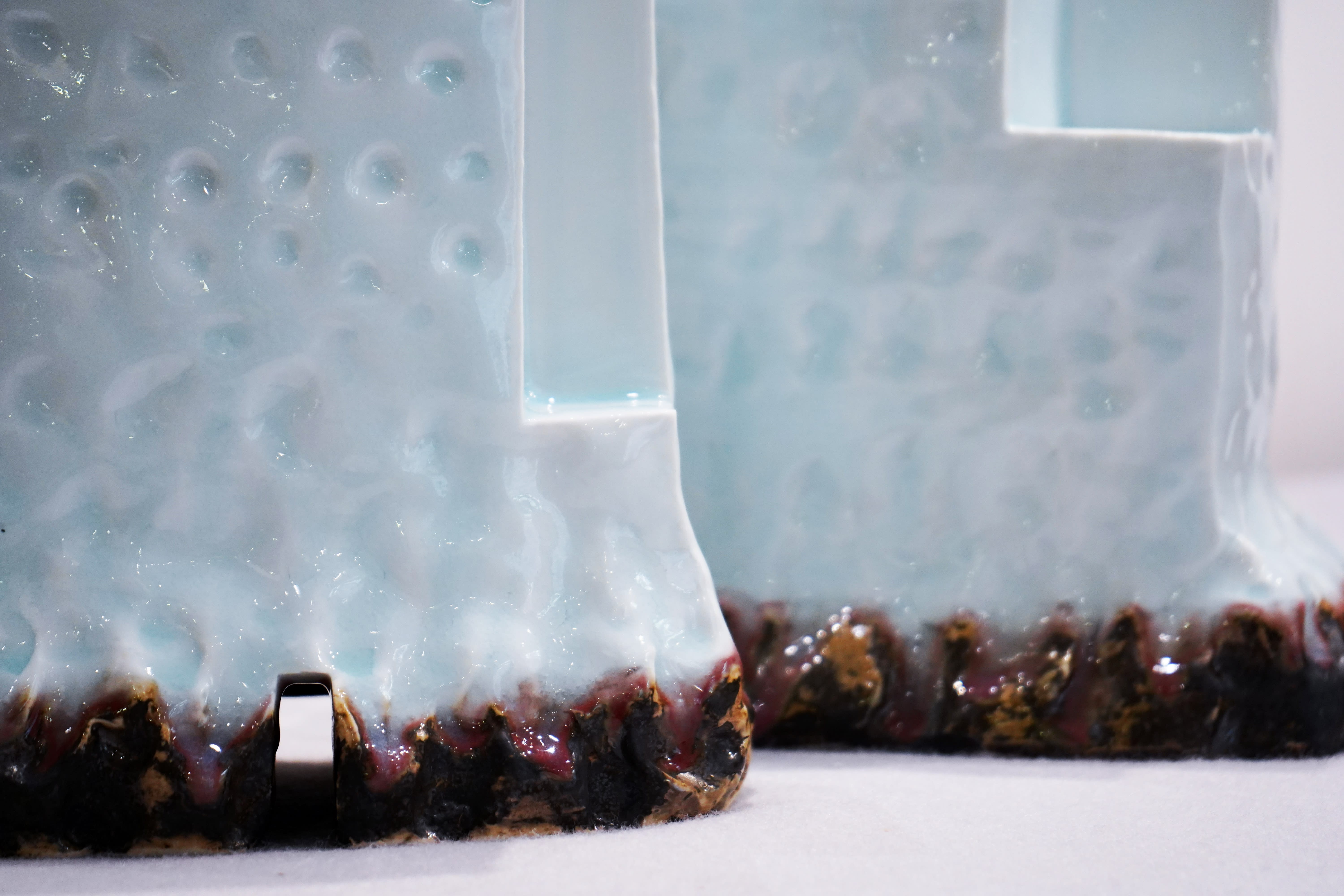
Detail of two "Kayho" sculptures, 2025 at Dai Ichi Arts.
The base offers a visual juxtaposition between the cool, luminous blue offered by celadon, and the darker, warmer tone. The juxtaposition creates a tension between solidity and dissolution. The forms seem to emerge from the ground like monoliths, yet the soft glaze, cascading like melting ice, lends them a spectral presence. His sculptures are at once haunting and beckoning.
